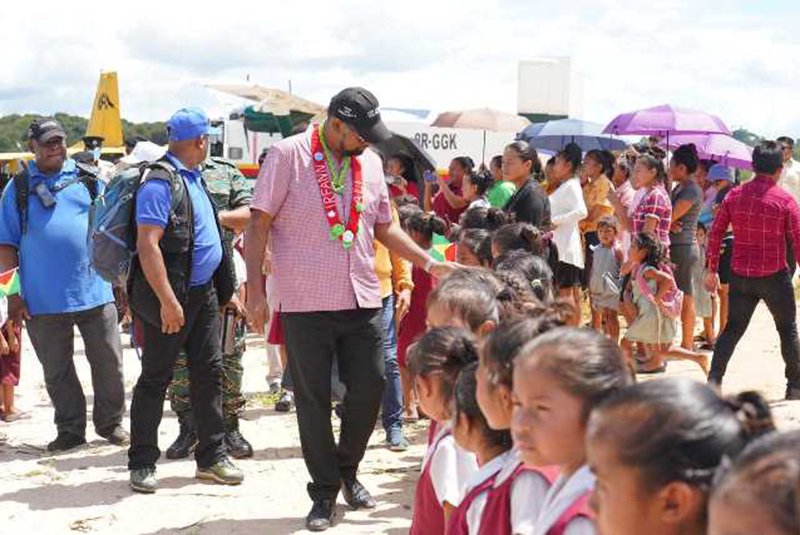Beyond Dreams: The Transformative Journey of Guyana’s Indigenous Under President Ali
Amerindians not just dreaming but achieving - President Dr Irfaan Ali
In our school books we are taught that Guyana is a land of six people. The first of these people to arrive were the American Indians or Amerindians who had traveled from Asia via ice bridge known as the Bering Strait. These inhabitants our history books tell us greeted famed explorer, Christopher Columbus when he and crew arrived in the West Indies.
Dance performance at the Heritage Village in Georgetown (Credit: DPI)
Historically, Amerindians or Indigenous Guyanese have been treated as secondary members of the country. In Guyana’s earliest days these proud people were regarded as backward, uneducated, and inconsequential. These perceptions continued in Guyana post-Independence and well into the 1990s. Fortunately , much of this changed when the People’s Progressive Party/ Civic won the General and Regional Elections in 1992.
Before 1992, economists ranked poverty among Amerindians communities at 80% while at the National level it was reported at about 45%. There were hardly any primary schools and secondary school enrollment was less than half of the national average and because Amerindians lived in what is described as the hinterland, they were excluded from social and economic activities because politicians of that era that investments in remote areas would not be prudent.
When the late Dr Cheddi Jagan became president of Guyana in 1992, one of his earliest acts was ensuring that Indigenous Heritage received the recognition befitting the country’s first peoples and so his government began what has evolved in a month long celebration of the unique contributions and culture of Amerindians.
Dr. Mohamed Irfaan Ali being greeted by residents of the Upper Mazaruni.
Budgetary allocations were made available to support the cultural activities as well sports competitions. The PPP/C continued to govern Guyana successfully to prosperity until 2015 and during this time Amerindians gained even more validation when the a new Ministry was created to specially to focus on Amerindians. The Ministry of Amerindian Affairs was established in 2005.
Following quickly on the heels of the Government Ministry was the introduction of the New Amerindian Act of 2006 to the National Assembly with was then signed into law. With this new piece of legislation Amerindians would have more decision making power over their titled land. They would also have to elect their village leaders who would manage their communities’ affairs.
This law also made provision for the establishment of the National Toshaos Council (NTC). The NTC is a 20 member umbrella body that oversees the development of policies, projects, and programmes that will ensure the development, welfare, as well as culture and physical preservation of all Guyana’s indigenous people. Along with these long overdue legislative improvements, there has been notable infrastructural development as well. The construction of hundreds of new schools at the nursery, primary, and secondary levels and the new district hospitals and health centers are just a many more examples of the PPP/C government’s dedication to the advancement and social welfare of Guyana’s Indigenous people.
Indigenous leaders from Guyana (Loop News)
In an effort to further preserve Amerindian culture, the government also funded the creation of dictionaries for Indigenous Languages. Hundreds of Amerindian youth, have benefited from scholarships to study along, the coastland at the secondary and tertiary levels, at professional learning institutions, and overseas. More recently, about 16 percent of the scholarships awards of the Guyana Online Academy of Learning have come from Hinterland communities.
Meanwhile another 1300 youths have been trained in various technical and vocational skills including garment repair, tourism, small engine repair, ICT servicing, and solar panel installation among others.
Additionally, financial investment into Amerindian communities continues to see growth, with this year’s allotment from the sale of carbon credits being increased to 26.5% or $23.2 million US. 2024 will also see 13 villages receiving Certificates of Title and Absolute Grants for Land Extension.



